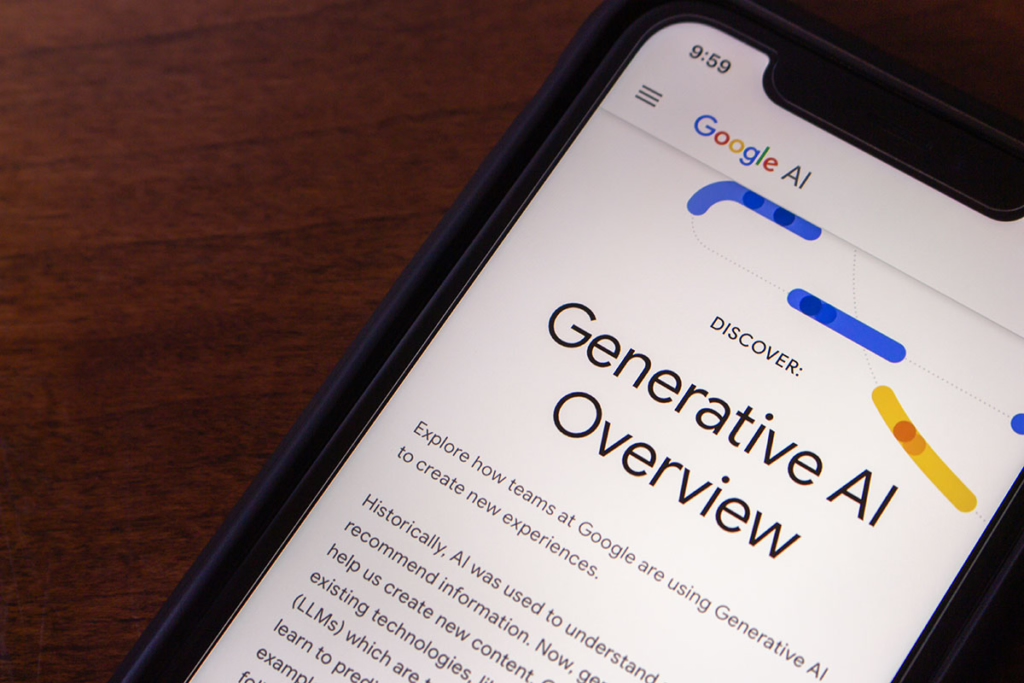If you’ve been keeping up with digital marketing news, you’ve probably heard the buzz around Google’s AI Overview (formerly known as “Search Generative Experience” or SGE). It’s one of the biggest shifts in how people find information online—and it’s changing the SEO game for businesses and marketers alike.
Let’s break down what AI Overview actually is, and how you can improve your chances of having your website show up in this powerful new search feature.
What Is Google AI Overview?
Google AI Overview is an AI-powered summary box that appears at the top of some search results. Instead of just showing a list of blue links, Google’s AI Overview provides a concise, AI-generated answer to the user’s question. Underneath that summary, Google often cites several websites as sources for the information provided.
For example, if someone searches:
“How do I choose a website platform for a small business?”
The AI Overview might generate a few short paragraphs answering the question—and link to 2-3 web pages where it pulled that information.
In short:
✅ It’s fast, conversational answers for users.
✅ It highlights authoritative content.
✅ It can drive significant visibility (and potentially traffic) to websites that Google cites as sources.
Why AI Overview Matters for Your Website
For businesses, appearing in AI Overview can be hugely valuable:
Brand visibility: Your website may appear right under the AI summary, even above the traditional organic results.
Traffic opportunities: Users looking for more detail may click the source links.
Authority building: Being cited by Google as a trusted source helps boost credibility.
But here’s the catch: there’s no “magic tag” or direct way to submit your page into AI Overview. Google’s AI decides what sources to cite based on quality, relevance, and authority.
How to Get Your Website Into Google AI Overview
While you can’t force your way into AI Overview, there are solid strategies to improve your chances:
1. Create Clear, Comprehensive Content
Focus on answering specific user questions thoroughly.
Use clear headings, lists, and structured content that’s easy for AI to parse.
Include definitions, summaries, and concise explanations.
2. Cover “People Also Ask” Queries
Look at the People Also Ask boxes in Google searches related to your niche. Those are often the types of questions AI Overview tries to answer.
Build content that directly answers these:
What is [topic]?
How does [topic] work?
Pros and cons of [topic]?
Steps to do [task]?
3. Demonstrate E-E-A-T (Experience, Expertise, Authoritativeness, Trustworthiness)
Google’s systems prioritize trustworthy, high-quality sources. Make sure your site:
Lists author names and credentials.
Uses reputable sources and citations.
Shows evidence of expertise in your field.
4. Keep Content Fresh and Updated
AI Overview favors recent, relevant information. Regularly update your key pages to reflect current knowledge and trends.
5. Optimize for Semantic Search
Google’s AI understands concepts and context—not just keywords. Use natural language, synonyms, and related phrases in your writing.
6. Improve Page Speed and UX
A technically solid site helps rankings overall, including in AI-driven results. Make sure your website:
Loads quickly.
Is mobile-friendly.
Has a clean, readable layout.
The Bottom Line
Google’s AI Overview is shaping the future of how people search—and how businesses get discovered online. The best way to “get into AI Overview” is the same approach that works for great SEO overall:
Answer real user questions.
Publish authoritative, trustworthy content.
Stay focused on quality and user experience.
At DiBella, we’re always keeping an eye on these changes to help our clients stay ahead of the curve. If you’re ready to optimize your website for the future of search—including AI Overview—get in touch with us today. Let’s make sure your business is part of the conversation.

